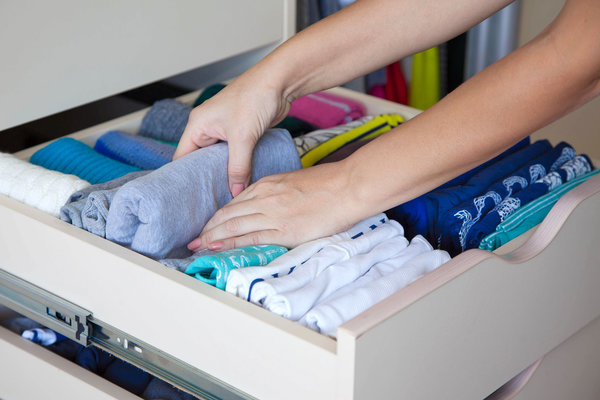Top 10 tips to tidy with purpose
Published: 20 Apr 2018
Spring is always a great time for a clear out. If you recognise yourself as a bit of a hoarder, perhaps now is the time to do something about it and tackle your clutter.

1. Rubbish
Clearly this should not be in your home at all. Recycle if you can — you don’t have to add rubbish to the landfill if it is recyclable. Be careful if you think you can re-purpose some things. This often involves crafting, and if you have to plan a way to use it — don’t. You’ve probably already got too much to do around your home.
2. Broken or damaged items
If an item is broken, missing a part, stained or otherwise damaged, you should seriously consider getting rid of it. This is especially true if you’ve let the broken item sit around for months on end, or you are unwilling, or would find it unnecessary, to spend the money to repair or replace the item. This means you really don’t need the object anyway, so just get rid of it.
3. Duplicates
Once you begin de-cluttering your home, you’ll often find duplicates of some things that you bought when you couldn’t find an item and had to get another one. Now that you’re de-cluttering, these duplicates will begin to emerge. Most of the time it is unnecessary to keep both, so keep the better one and get rid of the other.
4. Practical item not used in a year
If you see an item you know you haven’t used for a year, and its function is to be used, again you probably don’t need it, so get rid. Such items aren’t helping you in any way, but instead are just taking up valuable space which could be put to better use.
5. Decorative item no longer loved
If you’ve got a decorative item that you no longer love (or got as a gift and never loved), this is a classic example of clutter. Let go of your guilt about getting rid of it, and donate it (or sell it) so someone that does love it can enjoy it. Even if just on an unconscious level, every time you look at this decorative object, it makes you unhappy: release the negativity.
6. No legal or financial reason to keep it
Sometimes an item is initially saved, not for practical uses or for decorative uses, but because you may need it for legal or financial reasons. However, with time, many of these reasons for keeping something go away. It may be past the mandatory period for saving it (according to law), or relate to accounts you have since closed. Destroy unnecessary documents, but remember when you do, use a shredder in order to protect yourself from identity theft.
7. Clothes that don’t fit
If you’ve got clothes that don’t fit, even if they are perfectly lovely, then they are no use to you — this is a great way to de-clutter fast. It can be hard enough to find room in your home for one set of clothing. Don’t make it harder on yourself by trying to keep wardrobes of three different sizes, just in case.
8. Clothing you don’t feel comfortable in
Similarly, if you don’t actually feel comfortable in something, even if it fits, get rid of it. Practically, you will avoid that outfit and always choose something else, effectively allowing it to just take up room in your wardrobe, without benefiting you in any way.
9. Storage space
If you don’t have room to store an item somewhere in your home, seriously consider getting rid of it. There are very few reasons where you can justify outside storage that you have to pay for, typically on a monthly basis – it’s better to get rid than pay to keep something you are unlikely to use.
10. Not worth time for upkeep
Everything in your home must be cleaned and dusted on a regular basis. Plus, many items require additional upkeep. If an item is not worth your time to care for in this way, get rid of it! An added incentive is that when you do de-clutter your home, it will thereafter take a lot less time to keep it clean and maintain its organisation. That is because you’re not spending time taking care of stuff you don’t actually want. Be ruthless and enjoy the freedom of having less stuff and more space.




